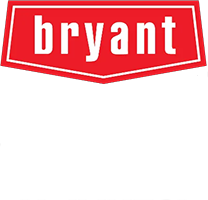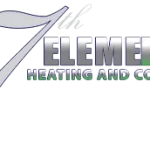Discover how whole-home air purification can transform your indoor environment, creating a healthier, more comfortable space for your family.
As a homeowner in Meridian, you invest a great deal in making your home a sanctuary—a place of comfort, safety, and well-being. You carefully select furnishings, maintain your property, and ensure your family is secure. But what about the very air you breathe inside that sanctuary? Modern homes are built to be energy-efficient, which is great for utility bills but can unfortunately trap airborne contaminants inside. This can lead to poor indoor air quality (IAQ), affecting everything from allergies and respiratory health to sleep quality and overall comfort. An indoor air purification system, integrated directly into your HVAC system, offers a powerful solution to actively clean the air throughout your entire home, ensuring every breath is a healthy one.
For health-conscious families, understanding what’s floating in your indoor air is the first step. Common household pollutants include dust, pet dander, pollen that drifts in from outside, mold spores, bacteria, and viruses. Beyond these particulates, volatile organic compounds (VOCs) released from cleaning products, new furniture, and building materials can also linger. A high-quality air purification system works silently and efficiently to remove these threats, providing peace of mind and a healthier living environment day in and day out.
Understanding the Technology: How Air Purification Works
Whole-home air purifiers are not just portable units you place in a single room; they are sophisticated systems installed within your home’s central heating and cooling ductwork. This integration allows them to clean the air every time your HVAC system runs. There are several leading technologies, each designed to target different types of pollutants.
High-Efficiency Media Filters
This is the foundation of many air purification strategies. Unlike standard 1-inch furnace filters, high-efficiency particulate air (HEPA) or high-MERV rated media filters are much thicker (often 4-5 inches) and have a dense, pleated design. This structure allows them to capture a significantly higher percentage of microscopic particles, including dust mites, pollen, pet dander, and mold spores. They are incredibly effective at improving air quality without overly restricting airflow, which is crucial for the health of your HVAC system.
UV Air Purifiers
Ultraviolet (UV) light technology takes air purification a step further. UV-C light, the same type used for sterilization in hospitals, is employed to neutralize airborne microorganisms. A UV lamp is installed within your ductwork, typically near the indoor coil where mold and bacteria can thrive in the cool, dark, and damp environment. As air passes by, the UV light destroys the DNA of viruses, bacteria, and mold spores, rendering them harmless and preventing them from reproducing and circulating through your home.
Oxidizing Systems (PCO)
Photocatalytic Oxidation (PCO) systems are advanced purifiers that can break down contaminants that filters alone cannot stop. They use a UV light source in combination with a catalyst (usually titanium dioxide) to create powerful oxidizing agents. These agents are released into the air to actively seek out and destroy VOCs, odors from cooking or pets, and chemical vapors. PCO technology essentially breaks down these harmful pollutants into harmless water and carbon dioxide molecules.
The Health and Home Benefits of Clean Air
Reduces Allergy & Asthma Symptoms
By capturing common triggers like pollen, dust, and pet dander, a whole-home system can significantly reduce the severity and frequency of allergy and asthma attacks for family members.
Neutralizes Odors
Persistent odors from cooking, pets, or mustiness are eliminated at the source, leaving your home smelling fresh and clean without the use of chemical air fresheners.
Helps Prevent Illness
UV and oxidizing purifiers can destroy airborne bacteria and viruses, reducing the chances of colds and other illnesses spreading among family members through the HVAC system.
Protects Your HVAC Equipment
Keeping dust and debris out of your system helps it run more efficiently and can extend its lifespan. This is why purification is a great addition to regular HVAC maintenance plans.
Did You Know?
According to the EPA, indoor air can be two to five times more polluted than outdoor air. Since people spend about 90% of their time indoors, the quality of your home’s air is a critical factor in your family’s overall health and wellness.
The Local Angle: Air Quality in Meridian and the Treasure Valley
Living in beautiful Meridian, Idaho, we enjoy clean mountain air for much of the year. However, our region faces unique air quality challenges. During the summer, wildfire smoke can drift into the Treasure Valley, bringing fine particulate matter that is harmful to breathe. In the winter, temperature inversions can trap pollutants close to the ground, leading to hazy days and concentrated levels of allergens and car exhaust fumes. Furthermore, our agricultural surroundings mean that seasonal pollen and dust levels can be high. An indoor air purification system provides a crucial defense, creating a clean air refuge inside your home regardless of the conditions outside.
Beyond pollutants, the Treasure Valley’s dry climate can lead to uncomfortably low humidity levels indoors, especially in winter. This can cause dry skin, scratchy throats, and static electricity. To create a truly optimized indoor environment, consider pairing your air purifier with a whole-house humidifier. This combination cleans and properly moisturizes your air for ultimate comfort and health.
Ready to Improve Your Home’s Air Quality?
Take the first step toward a healthier home environment for your family. The expert team at 7th Element Heating and Cooling can help you select and install the perfect indoor air purification system for your needs and existing HVAC setup.
Frequently Asked Questions (FAQ)
How often do I need to maintain my air purification system?
Maintenance depends on the type of system. Media filters typically need to be replaced every 6-12 months. UV bulbs should be replaced annually to maintain their effectiveness. Our technicians can handle this during your regular HVAC tune-up, which is a key part of our maintenance plans.
Will an air purifier make my energy bills go up?
Modern air purification systems are designed to be energy-efficient and have a minimal impact on your electricity usage. In fact, by keeping your HVAC system cleaner, a good filter can actually help it run more efficiently, potentially offsetting the small cost to run the purifier.
Can I install a whole-home air purifier myself?
Installation of whole-home systems requires cutting into your existing ductwork and involves electrical wiring. To ensure safety, proper function, and an airtight seal, professional HVAC installation by a licensed and insured technician is strongly recommended.
Which type of air purifier is best for my family?
The best system depends on your specific concerns. If allergies are the primary issue, a high-MERV media filter is an excellent start. If you are concerned about germs and mold, adding a UV purifier is beneficial. For odors and chemical sensitivities, a PCO system is the most comprehensive solution. We can assess your home and needs to provide a tailored recommendation.
Glossary of Terms
HVAC: Stands for Heating, Ventilation, and Air Conditioning. This is the central system that controls the climate in your home.
Indoor Air Quality (IAQ): A term used to describe the quality of the air within a building, especially as it relates to the health and comfort of its occupants.
MERV: Minimum Efficiency Reporting Value. A rating system (from 1 to 20) that measures a filter’s ability to capture airborne particles. The higher the MERV rating, the more particles it can trap.
Particulate Matter: A mixture of solid particles and liquid droplets found in the air. Can include dust, dirt, soot, smoke, and dander.
Volatile Organic Compounds (VOCs): Gasses emitted from certain solids or liquids, such as paints, cleaning supplies, and new furniture. Many VOCs can have short- and long-term adverse health effects.

